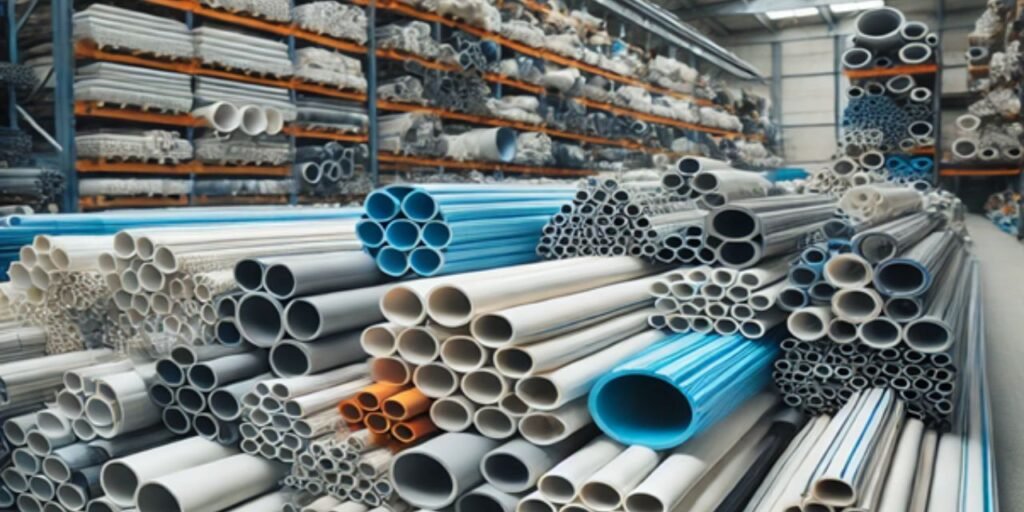
Driving Green Building Movements, The Role of Sustainability and Durability in the Plastic Pipes Marke Durability in the Plastic Pipes Market
The global shift towards sustainability in construction has led to a significant transformation in the building materials sector. One of the key areas of this transformation is the increasing demand for sustainable, durable, and eco-friendly products, particularly plastic pipes. As the construction industry faces pressure to meet environmental standards and adopt green building practices, plastic pipes are emerging as a preferred choice.
The Plastic Pipes market will generate US$ 37.34 Billion revenue by 2023. The global market for Plastic Pipes is expected to reach US$ 63.78 Billion by 2033, growing at a CAGR of 5.5% between 2023 and 2033.
Sustainability in Construction and Green Building Movements
Sustainability in construction refers to the practice of designing, constructing, and operating buildings in an environmentally responsible and resource-efficient manner. Green building movements have gained considerable traction over the past few decades, as governments, developers, and consumers increasingly recognize the need to reduce environmental impacts and create energy-efficient spaces.
One of the main objectives of green buildings is to minimize energy consumption, reduce water waste, and decrease carbon footprints throughout the construction and operational life cycles. To achieve these goals, materials used in construction must be sustainable, energy-efficient, and durable. This is where the role of plastic pipes comes into play.
The Role of Plastic Pipes in Sustainable Construction
Plastic pipes, primarily made from materials like PVC (Polyvinyl Chloride), CPVC (Chlorinated Polyvinyl Chloride), and HDPE (High-Density Polyethylene), have gained widespread acceptance in green building projects due to their numerous environmental and economic benefits. These pipes are used in various applications, including water supply systems, drainage, plumbing, and irrigation. The shift towards these materials has been driven by their alignment with sustainability goals in construction projects.
1. Energy Efficiency and Reduced Environmental Impact
Plastic pipes have a lower carbon footprint compared to traditional materials like metal or concrete. The production of plastic pipes requires significantly less energy, and their lightweight nature means that they consume less fuel during transportation and installation. As energy efficiency becomes a central tenet of green building, the adoption of plastic pipes aligns with efforts to reduce the overall environmental impact of construction.
In terms of waste reduction, plastic pipes are also more efficient. For instance, plastic is highly recyclable, and modern production methods allow for the incorporation of recycled plastics into new pipes, further reducing the demand for virgin materials and minimizing landfill waste. This circular economy approach is crucial for supporting green building initiatives.
2. Durability and Longevity
Durability is another important aspect of sustainability. Materials that need frequent replacement or repair contribute to additional resource consumption, higher costs, and increased waste. Plastic pipes, particularly those made from HDPE and PVC, are known for their exceptional longevity and resistance to corrosion, chemical degradation, and external stresses.
The long lifespan of plastic pipes, coupled with their low maintenance needs, reduces the frequency of repairs and replacements in building systems. This results in less material waste, fewer resources spent on maintenance, and a lower environmental impact over time. For builders and property owners, this durability translates into cost savings over the lifetime of the building.
The Growing Plastic Pipes Market
The demand for plastic pipes is on the rise globally, driven by several factors including urbanization, infrastructure development, and the growing emphasis on sustainable construction practices. According to the latest insights from Persistence Market Research, the global plastic pipes market is expected to experience significant growth during the forecast period. As the adoption of green building practices becomes more prevalent, plastic pipes are increasingly seen as a key enabler of sustainability in construction projects.
Key Market Drivers
- Regulatory Push Towards Sustainability: Governments around the world are implementing stricter building codes and environmental regulations, particularly in developed markets like Europe and North America. These regulations are encouraging builders to adopt green building materials, including plastic pipes, which comply with energy efficiency standards and contribute to lower environmental impact.
- Infrastructure Development in Emerging Markets: As infrastructure development in emerging economies accelerates, the demand for durable and cost-effective construction materials is rising. Plastic pipes offer an affordable solution for countries with rapid urbanization and growing infrastructure needs. Their versatility and ease of installation make them ideal for a wide range of applications, from residential to industrial construction.
- Energy and Water Conservation: Plastic pipes are being increasingly used in water distribution and drainage systems due to their low friction characteristics, which reduce energy consumption in fluid transport. They also help in reducing water leakage, a critical issue in many parts of the world. By minimizing water wastage, plastic pipes contribute to the sustainability of water resources, an important element in the green building movement.
Innovations in the Plastic Pipes Market
The plastic pipes market is witnessing several innovations aimed at improving the sustainability and performance of these products. Manufacturers are focusing on developing advanced polymers and composite materials that are stronger, more resistant to wear, and have lower environmental impacts.
One notable innovation is the development of bio-based plastic pipes. These pipes are made from renewable resources and are biodegradable, offering a greener alternative to conventional petroleum-based plastics. The increasing focus on eco-friendly production methods and materials is expected to further drive the adoption of plastic pipes in green building projects.
Challenges and Future Outlook
While the plastic pipes market holds significant growth potential, there are challenges to address. One of the main concerns is the environmental impact of plastic waste, particularly in the context of plastic pollution. However, with increased recycling efforts and advancements in biodegradable plastics, these challenges can be mitigated.
Looking ahead, the plastic pipes market is poised for continued growth, driven by the ongoing shift toward sustainability in the construction industry. As green building movements gain momentum, the demand for eco-friendly, durable materials like plastic pipes will only increase, cementing their role as a cornerstone of modern, sustainable infrastructure.
Conclusion
Plastic pipes are playing a pivotal role in driving green building movements across the globe. Their sustainability, durability, and cost-effectiveness make them an ideal choice for environmentally conscious construction projects. As the industry embraces sustainability and regulatory requirements become stricter, the plastic pipes market is set to expand significantly, supported by innovations and global shifts towards greener, more efficient building practices.
